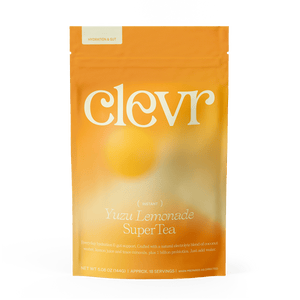
How to Detox From Coffee
Jitters, anxiety, digestive issues, insomnia — they’re all signs that coffee isn’t aligning with your body. They’re also signs that it might be time for a detox.
Maybe it’s the aroma or tasting notes. Maybe it’s the morning ritual of it all. Or more than likely, that liquid courage keeps you fueled, focused, and driven. Whatever your reason, for many of us coffee represents a certain comfort. But what if after the last sip you feel anything but comforted? Jitters, anxiety, digestive issues, insomnia — they’re all signs that coffee isn’t aligning with your body (Harvard University, 2021). They’re also signs that it might be time for a detox.
If going sans caffeine sounds scary, don’t worry. Think of it as a break — not a break-up — and an opportunity to let your body recalibrate. Here’s how to do it:
But First...Caffeine
Caffeine works quickly. Once you take those first sips, it makes its way to your stomach to your small intestine (Cleveland Clinic, 2020) and then into your bloodstream. (That acid release in the stomach is often the reason behind GI discomfort.) The result is a revved-up central nervous system and an increase in dopamine in your brain that gives you that take-on-the-world vibe.
Caffeine’s endurance means the stimulant can hang out in your system for 10 hours before its effects dissipate. And keep in mind, coffee isn’t the only source for it. Caffeine is naturally occurring in tea leaves and cacao, which is why we love sipping on our Rose Cacao during the day, not before bedtime.
How to Cut Back
It’s all about the taper. If you’re used to your daily cuppa(s), quitting cold turkey can bring on withdrawal symptoms — headaches, sluggishness, mental fog — and the more caffeine you’re used to, the more aggressive those side effects may feel (Cleveland Clinic, 2020).
Instead, reduce your caffeine intake gradually. One researcher suggests trimming your caffeine by half for a few days, then by a quarter for the following days (The Cut, 2016). An easy way to do that is by shifting to lower-caff options like green or black tea. Our tea SuperLattes — Matcha and Chai — have less than half the caffeine of regular drip coffee, bringing a dose of focus and energy but with a steady, more balanced energy. You could then transition to decaf roasts, which, despite the name, still have traces of caffeine.
To truly test that mind-body strength, end your week with zero caffeine. An herbal option like golden milk with a nourishing blend of turmeric and plant-based cream mimics your morning coffee ritual. If you’re itching for energy, cardio or uplifting essential oils like rosemary can replace your liquid perk-up during your detox period.
When to Dive Back in
If coffee is still an important component of your everyday — *raises hand* — slowly incorporate it back in, but this is where listening to your body really counts. Take note of how you feel with each sip. If you’re still getting the shakes, amp up your water intake — caffeine tends to dehydrate — or stir in healthy fats to slow the absorption of coffee (Dr. Mark Hyman, 2016). That’s why we include organic coconut cream in our SuperLattes, to give you steady, jitter-free energy, boosted with adaptogens to balance out adrenal overstimulation from caffeine. It’s all about enjoying the perks of coffee (pun intended) in a more mindful, balanced way.
That’s what we call the ultimate upgrade.
































